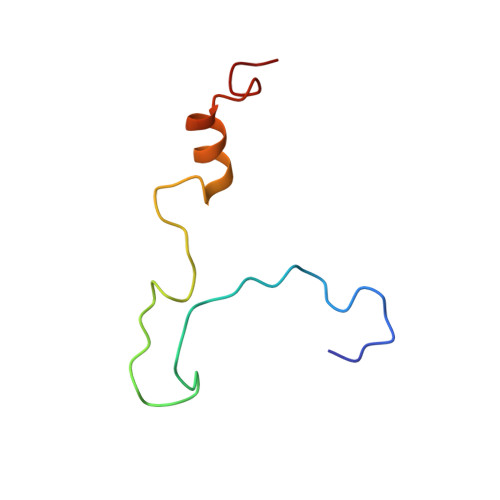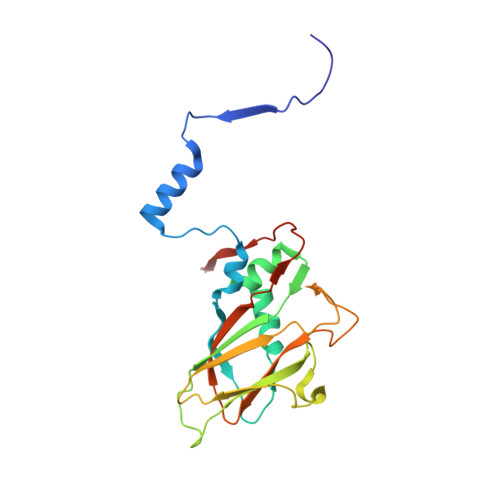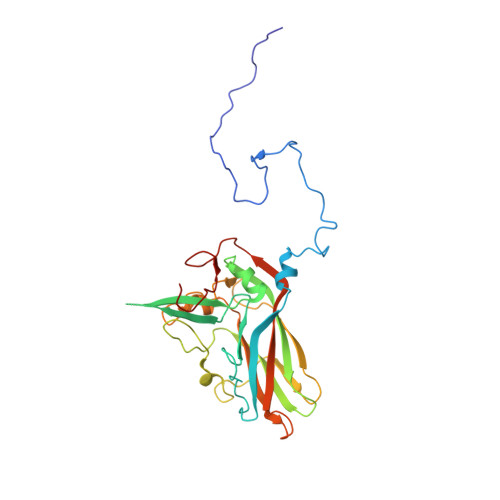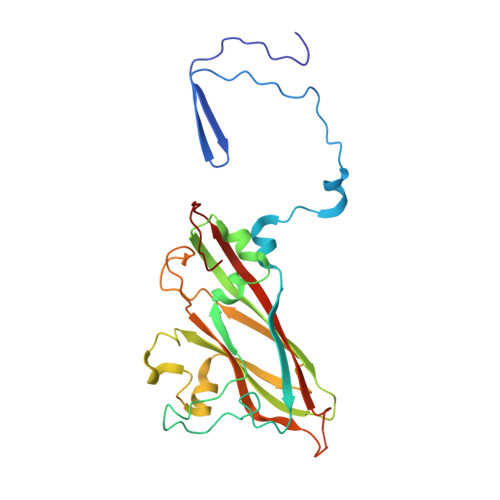Virion structure and in vitro genome release mechanism of dicistrovirus Kashmir bee virus.
Mukhamedova, L., Fuzik, T., Novacek, J., Hrebik, D., Pridal, A., Marti, G.A., Guerin, D.M.A., Plevka, P.(2021) J Virol 95
- PubMed: 33658338
- DOI: https://doi.org/10.1128/JVI.01950-20
- Primary Citation of Related Structures:
7BC3, 7BE9, 7BG8, 7BGK - PubMed Abstract:
Infections of Kashmir bee virus (KBV) are lethal for honeybees and have been associated with colony collapse disorder. KBV and closely related viruses contribute to the ongoing decline in the number of honeybee colonies in North America, Europe, Australia, and other parts of the world. Despite the economic and ecological impact of KBV, its structure and infection process remain unknown. Here we present the structure of the virion of KBV determined to a resolution of 2.8 Å. We show that the exposure of KBV to acidic pH induces a reduction in inter-pentamer contacts within capsids and the reorganization of its RNA genome from a uniform distribution to regions of high and low density. Capsids of KBV crack into pieces at acidic pH, resulting in the formation of open particles lacking pentamers of capsid proteins. The large openings of capsids enable the rapid release of genomes and thus limit the probability of their degradation by RNases. The opening of capsids may be a shared mechanism for the genome release of viruses from the family Dicistroviridae Importance The western honeybee ( Apis mellifera ) is indispensable for maintaining agricultural productivity as well as the abundance and diversity of wild flowering plants. However, bees suffer from environmental pollution, parasites, and pathogens, including viruses. Outbreaks of virus infections cause the deaths of individual honeybees as well as collapses of whole colonies. Kashmir bee virus has been associated with colony collapse disorder in the US, and no cure of the disease is currently available. Here we report the structure of an infectious particle of Kashmir bee virus and show how its protein capsid opens to release the genome. Our structural characterization of the infection process determined that therapeutic compounds stabilizing contacts between pentamers of capsid proteins could prevent the genome release of the virus.
Organizational Affiliation:
Structural Virology Group, Central European Institute of Technology, Masaryk University, Kamenice 753/5, 62500 Brno, Czech Republic.

















